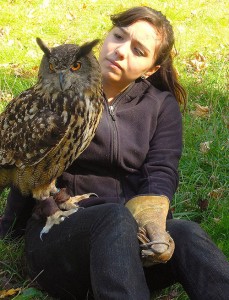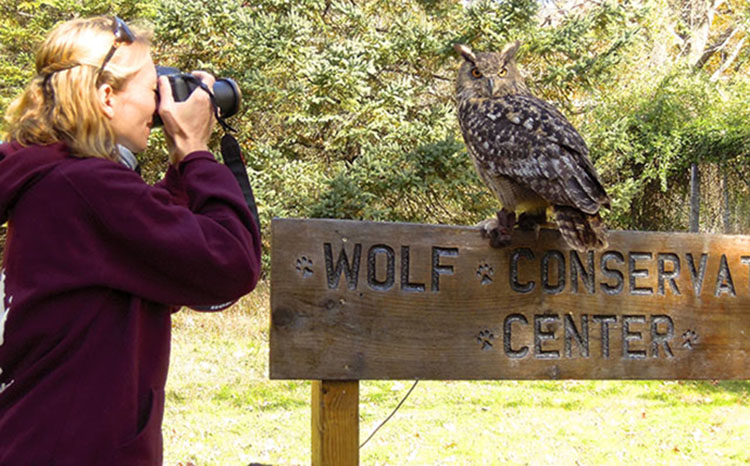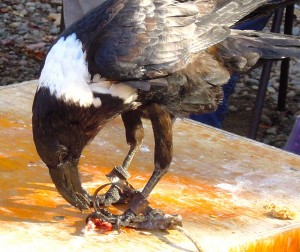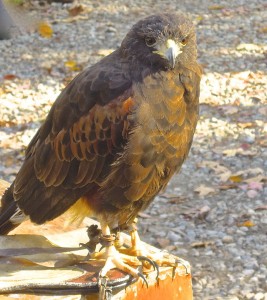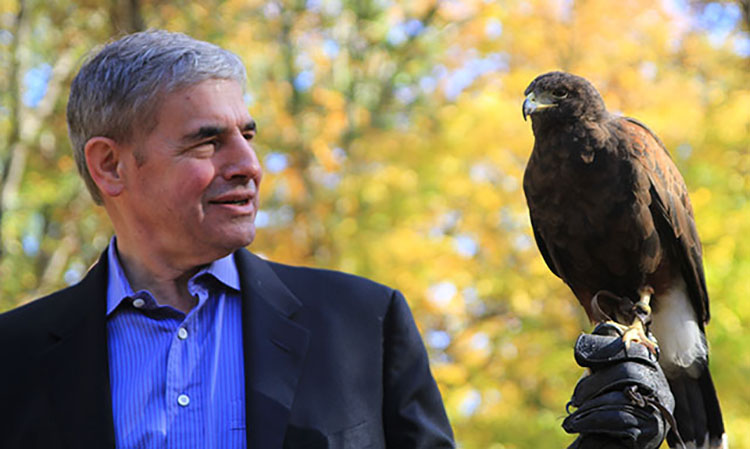I recently had the pleasure of visiting the Wolf Conservation Center in South Salem, New York. As a friend and supporter of the organization, I had looked forward to seeing the center. Having returned to Connecticut, I was able to attend an event.
Wolf Conservation Center
The center’s mission is to promote wolf conservation and recovery:
The Wolf Conservation Center (WCC), founded in 1999 by Hélène Grimaud, is a private, not-for-profit environmental education organization located in South Salem, NY. The WCC’s mission is to promote wolf conservation by teaching about wolves, their relationship to the environment, and the human role in protecting their future. The WCC accomplishes this mission through onsite and offsite education programs emphasizing wolf biology, the ecological benefits of wolves and other large predators, and the current status of wolf recovery in the United States.
The WCC also participates in the Species Survival Plan (SSP) and Recovery Plan for two critically endangered wolf species, the Mexican gray wolf … and the red wolf.
Maggie Howell is the center’s executive director. She also was a founding board member for the National Wolfwatcher Coalition and serves as its Director of Wildlife Science.
The center has an incredible reach, as reflected in its 2012 Annual Report. Last year, it provided education programs for more than 38,000 people. It also provides the global opportunity to view wolves through its webcams.
Event
The event, held on October 20, was entitled “Up and Away 10”:
The WCC is celebrating National Wolf Awareness Week with an exciting bird of prey experience presented mother-daughter falconer team Lorrie Schumacher (mother) and Talon Skye (teenage daughter), of TALONS! Guests will meet beautiful feathered ambassadors … during the educational and interactive bird of prey experience.
Birds of Prey
The Talons! presentation on raptors was informative and kept us rapt! Here are photographs I took:
The European eagle owl is also known as the Eurasian eagle owl; ARKive provides information on the species here. To learn about the African white-necked raven, see BirdLife International’s information here.
Harris’s hawks live in southwestern United States, Central America, and parts of South America. James Audubon named the species after his friend and supporter, Edward Harris. The hawks are called “wolves of the sky” (or air) because they form family packs and sometimes hunt together. A short video from National Geographic shows the birds in action. The hawks are commonly used in falconry.
Ms. Howell kindly took this photo:
Wolves
After the segment on birds of prey, WCC staff member Alex Spitzer made an excellent presentation on the center’s wolves. We were able to observe the three ambassador wolves as Mr. Spitzer fed them through the enclosures.
Atka, the ambassador wolf who travels for programs at schools and other venues, is an Arctic gray wolf. He participated in almost 160 offsite programs last year. We can see him at work in the video “Day In the Life Atka,” and watch him howl in “Atka’s Morning Melody.”
Ambassador wolves Alawa and Zephyr are littermates. They are a mix of gray wolf subspecies. The video “When the world says, ‘Give up,’ Hope whispers, ‘Try one more time,'” discussed by the WCC here, features them.
As Mr. Spitzer explained, gray wolves are known as such because their undercoat, which provides insulation, is gray. Their top coat is made up of waterproof guard hairs.
While the ambassador wolves have been socialized, wild wolves fear man. Most of the center’s wolves retain their wild nature and normally are not seen by visitors.
Recognition of the WCC by GreatNonprofits
As I wrote on the GreatNonprofits website, “My visit only made me more deeply appreciate the center and the important work it is doing.”
I was glad to read this news:
It is with howls of gratitude that the Wolf Conservation Center (WCC) announces that it has been honored with a prestigious 2013 Top-Rated Award by GreatNonprofits, the leading provider of user reviews about nonprofit organizations.
As I noted in my GreatNonprofits review, quoted in WCC’s release, young people touched by the center “can share their knowledge and appreciation of wolves with others throughout their lives.”
Conclusion
Wolves and raptors play important roles in maintaining healthy ecosystems. They also are intrinsically valuable and are beautiful and fascinating creatures.
I encourage people interested in wildlife to take advantage of the programs offered by both Talons! and the Wolf Conservation Center. I also invite those who are interested in helping protect and restore wolves to join me in supporting the WCC.
[Updated/deleted links: September 23, 2018]

